The small Umbrian village of Corciano preserves in the church of Santa Maria Assunta a masterpiece by Pietro Vannucci known as Perugino (Città della Pieve, c. 1450 - Fontignano, 1523): there are many tourists who come specifically to admire here one of the artist’s pictorial testimonies present in the region outside the capital, the Altarpiece of the Assumption, which after more than five hundred years is still preserved in the place for which it was made. And the relationship that the work has with the townspeople is very close: they are still very devoted to it and even, when it was restored between 2003 and 2004 and then disassembled and taken to the workshop, some of the faithful shed tears because on entering the church to come to pray they no longer had their Virgin to turn to. One can therefore imagine the joy and celebration with which the altarpiece was greeted upon its return. Placed on the high altar of the church in an elevated position, the work illuminates the room today with its vivid colors and its large, architectural blue and gold frame that encloses the main panel and the two predellas.
The Altarpiece of the Assumption, also known as the Corciano Altarpiece, is thus composed of three elements: the central panel where the scene of theAssumption of the Virgin is depicted, and the two predels below that depict theAnnunciation and theAdoration of the Shepherds. TheAnnunciation in the predella on the left is set within an architectural structure divided perfectly in half by a column, on either side of which Perugino symmetrically places the announcing angel on one side and the Virgin Annunciate on the other, while in the background is painted a landscape with rolling hills and two almost stylized saplings also arranged symmetrically. TheAdoration of the Shepherds in the predella on the right, on the other hand, is set in a natural landscape punctuated behind the Holy Family and the shepherds in the foreground by a tall wooden structure, the overlying part of which, however, cannot be seen. Arranged again symmetrically, the Madonna and St. Joseph are kneeling in adoration of the Child, and slightly further back stand the two shepherds; in the center, the Infant Jesus is depicted in a pose reminiscent of that of the Child in theAdoration of the Shepherds preserved in the National Gallery of Umbria, with his little head toward the viewer, his little body almost on his side, his elbow resting on the ground to support himself and his opposite hand on his bent leg. Behind, the ox and donkey on one side, on the other a shepherd with his flock, the dove of the Holy Spirit descending centrally and an angel in flight coming from the left corner of the scene.
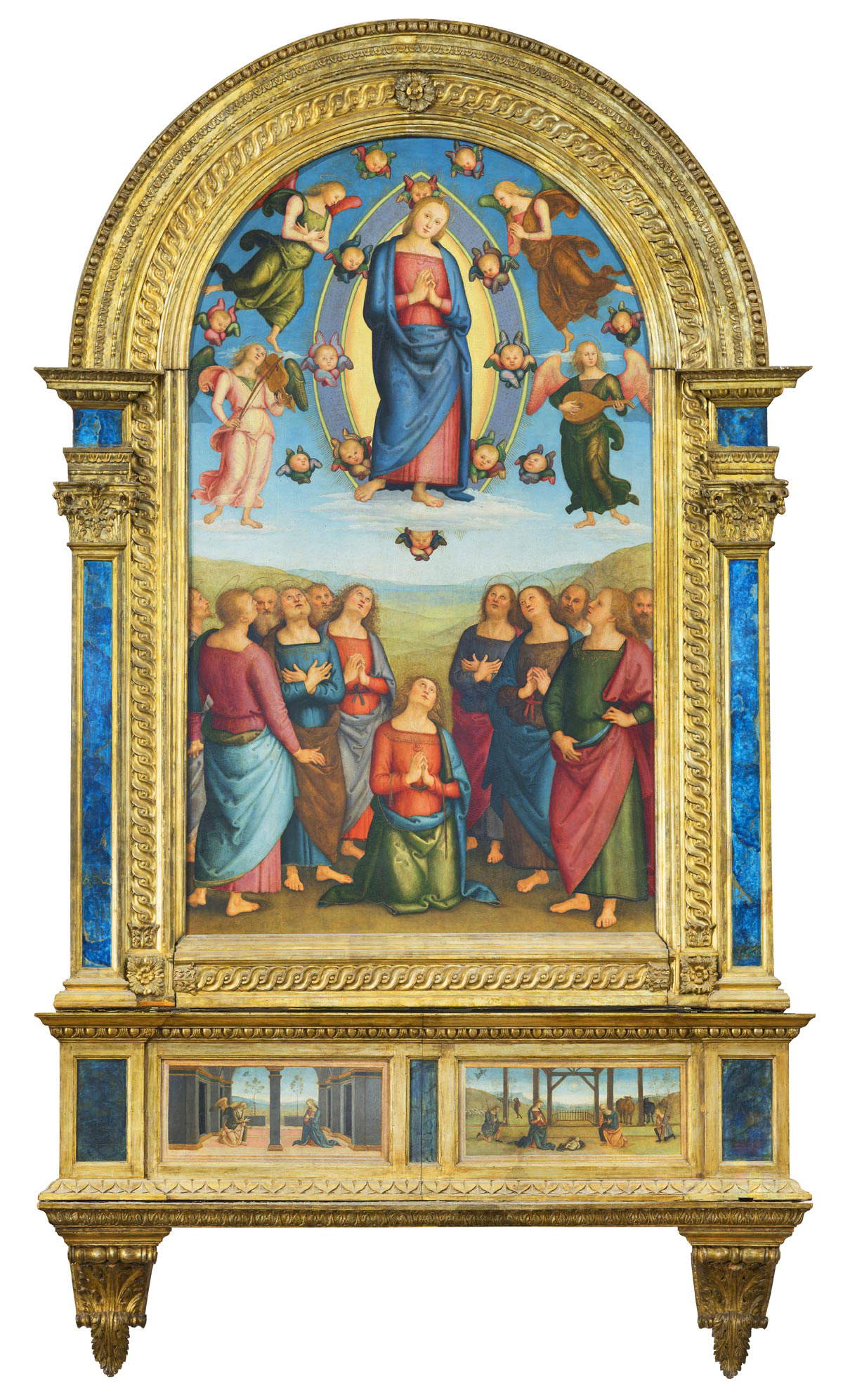
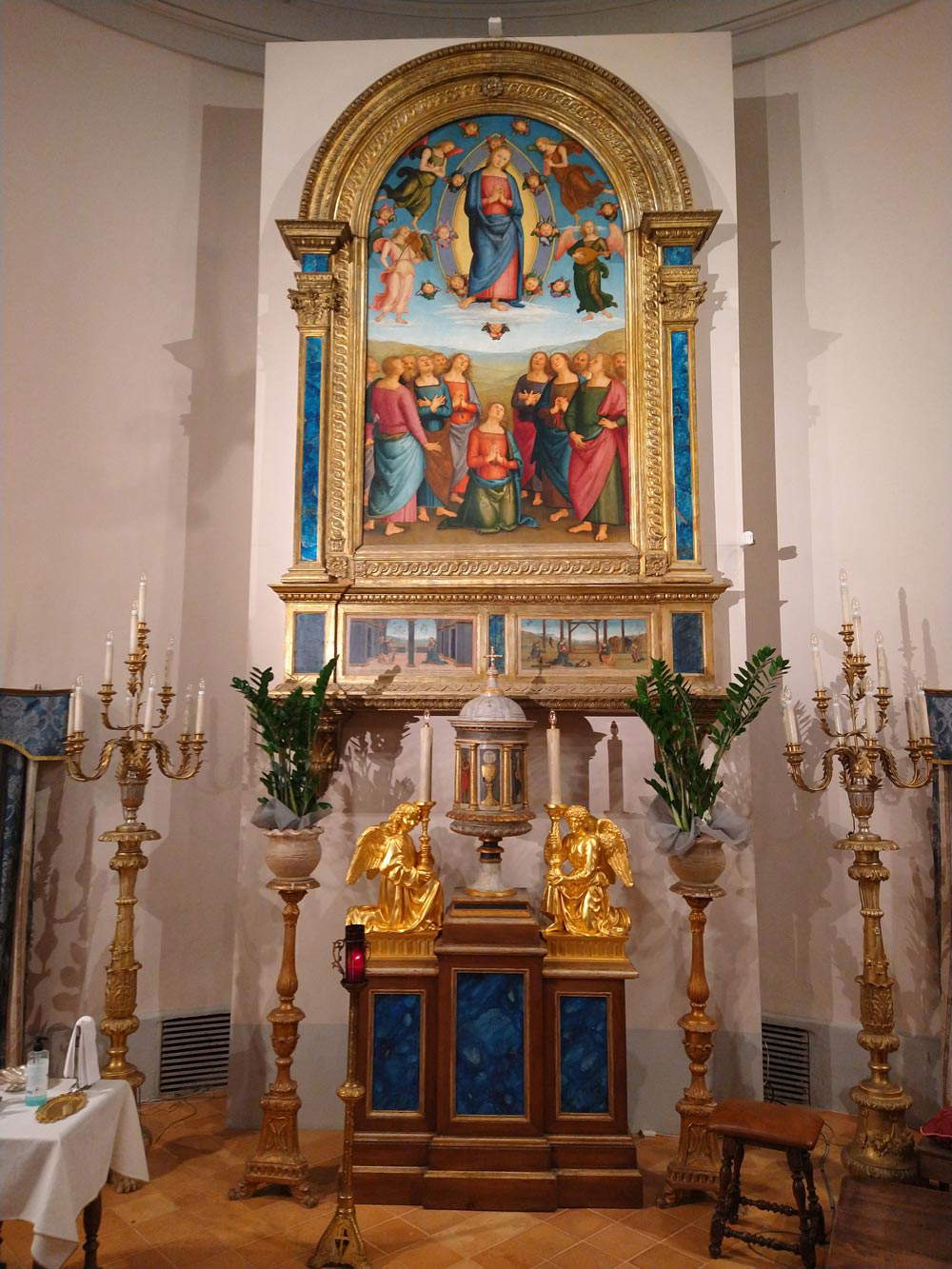
The main panel has in the background the rolling Umbrian hills that slope ever downward until they almost fade away to give the perception of depth to the landscape, which is more defined for the nearest hills and more blurred as one moves away toward the horizon. And at the top a clear blue sky. The scene unfolds on two different but interconnected levels . The lower section is populated by the twelve apostles arranged in two groups, one of six and one of five, standing, and the twelfth in the center kneeling. The latter is St. Thomas, recognizable by the Virgin ’s girdle on his arm (in fact, the Apocryphal Gospels relate that Our Lady, after the Assumption, gave the girdle to the apostle). All look upward with amazed expressions : most of them pray with their hands crossed or joined, but there are also those who lift their gaze while holding a hand on their hip or those who accompany their amazement with a gesture.
Instead, the upper section is occupied in the center by the Virgin Assumed into heaven within a mandorla of light, surrounded by seraphim and four praying and musician angels. The Madonna looks at the viewer in prayer and rests her feet on a cloud that lifts her high into the sky.
Perugino made the Altarpiece of the Assumption in 1513, ten years before his death: it is therefore a work from the late phase of his production, when the artist returned to his native Umbria after being between Florence and Rome, and particularly in the boroughs. The contract was signed on December 18, 1512, by the notary Felice di Antonio, in front of the Collegio dei Calzolai, between the artist, the procurator of the church of Santa Maria Antonio di Cristoforo Ciacci and the representative of the Corcianese community Luca di Matteo Baroni. The Corcianese community required the painter to create a work complete with a “case” to be destined for the high altar of the parish church dedicated to the Virgin of the Assumption for a fee of one hundred florins and to complete it by August 15 of the following year, since the feast of the Assumption falls on that day. The painter therefore had to commit to completing the altarpiece within the eight months, and the hundred florins would be given to him partly in advance and partly by the time the work was delivered.
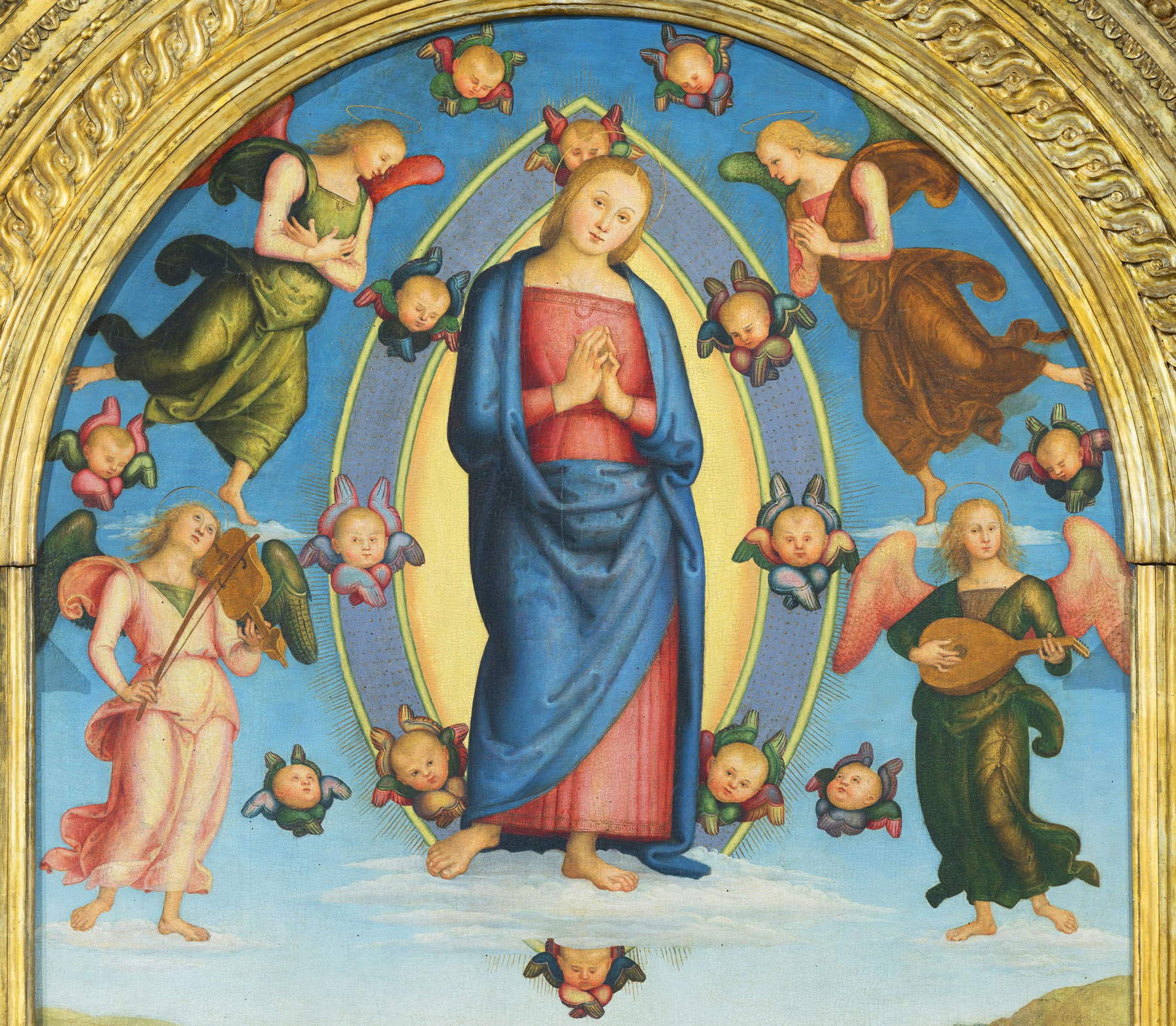
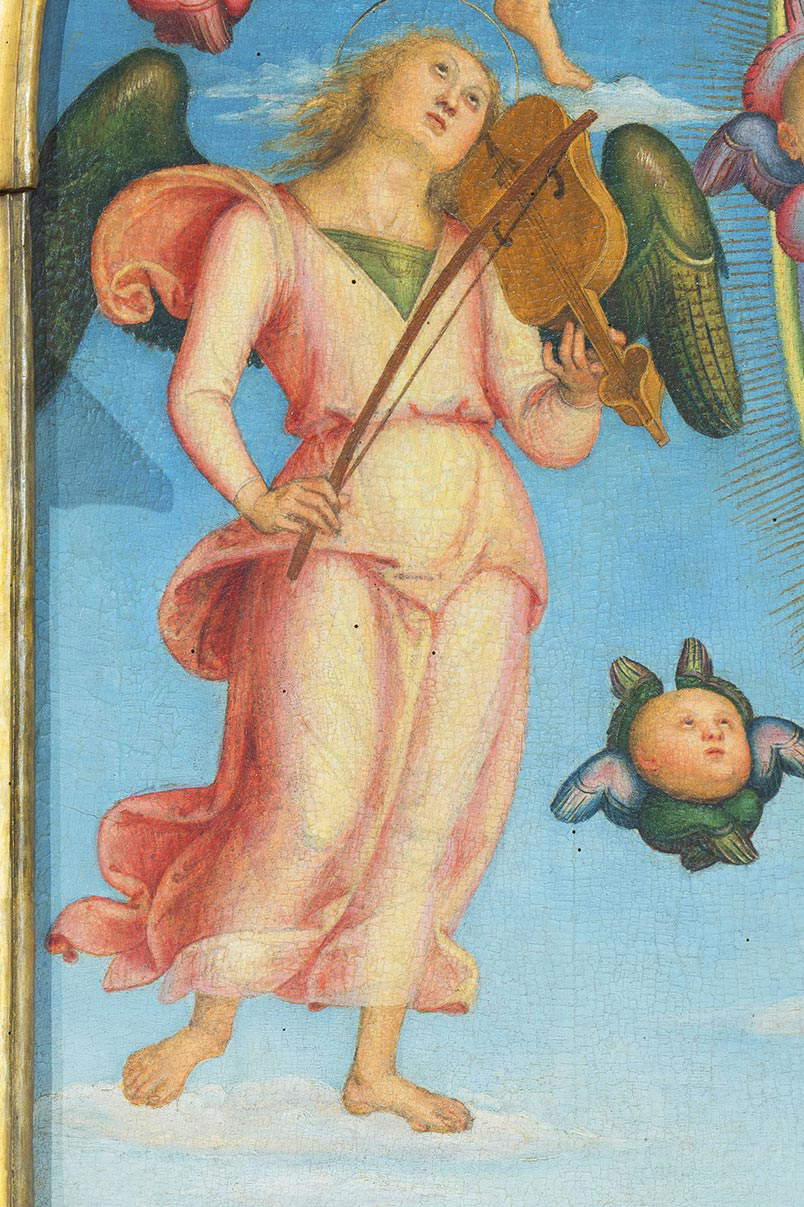
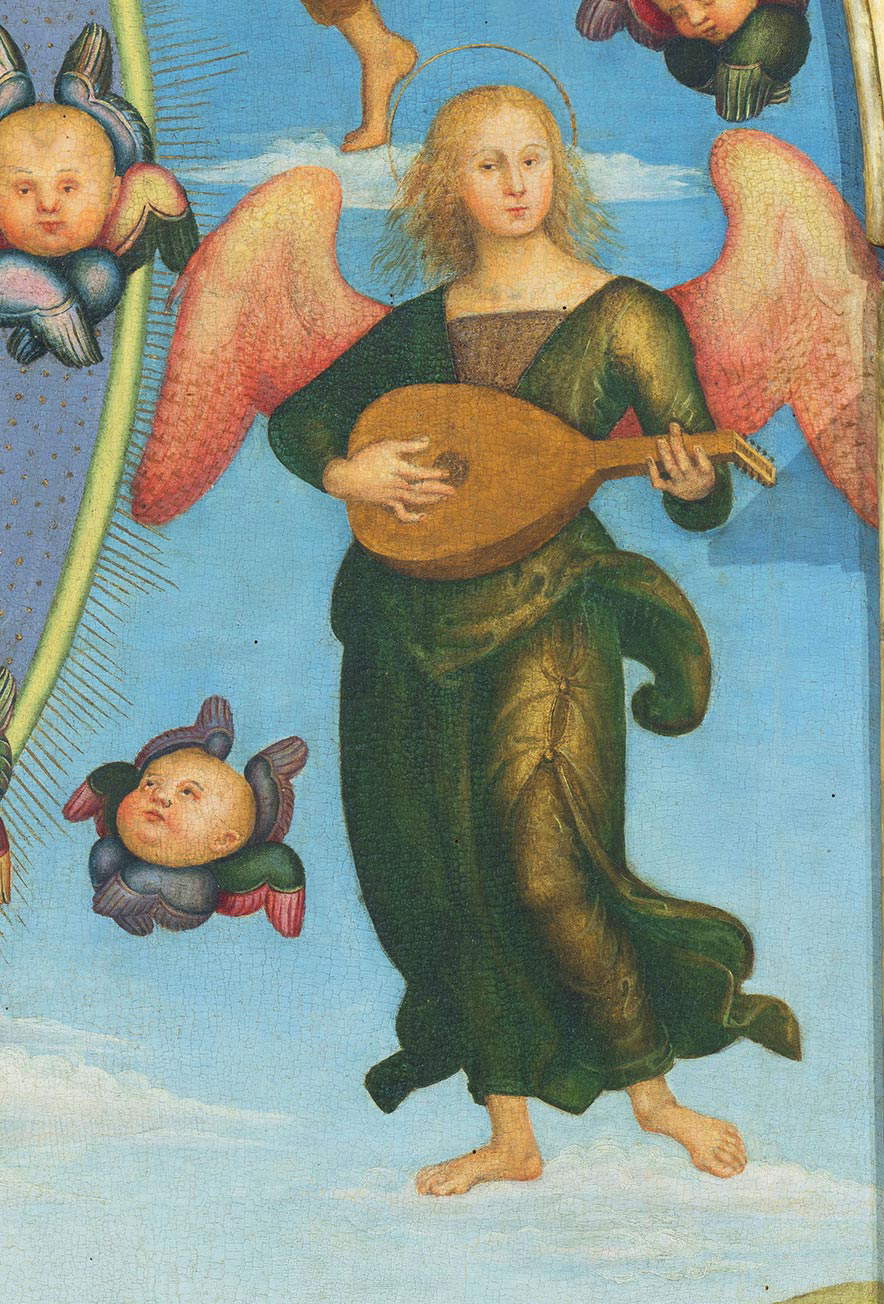
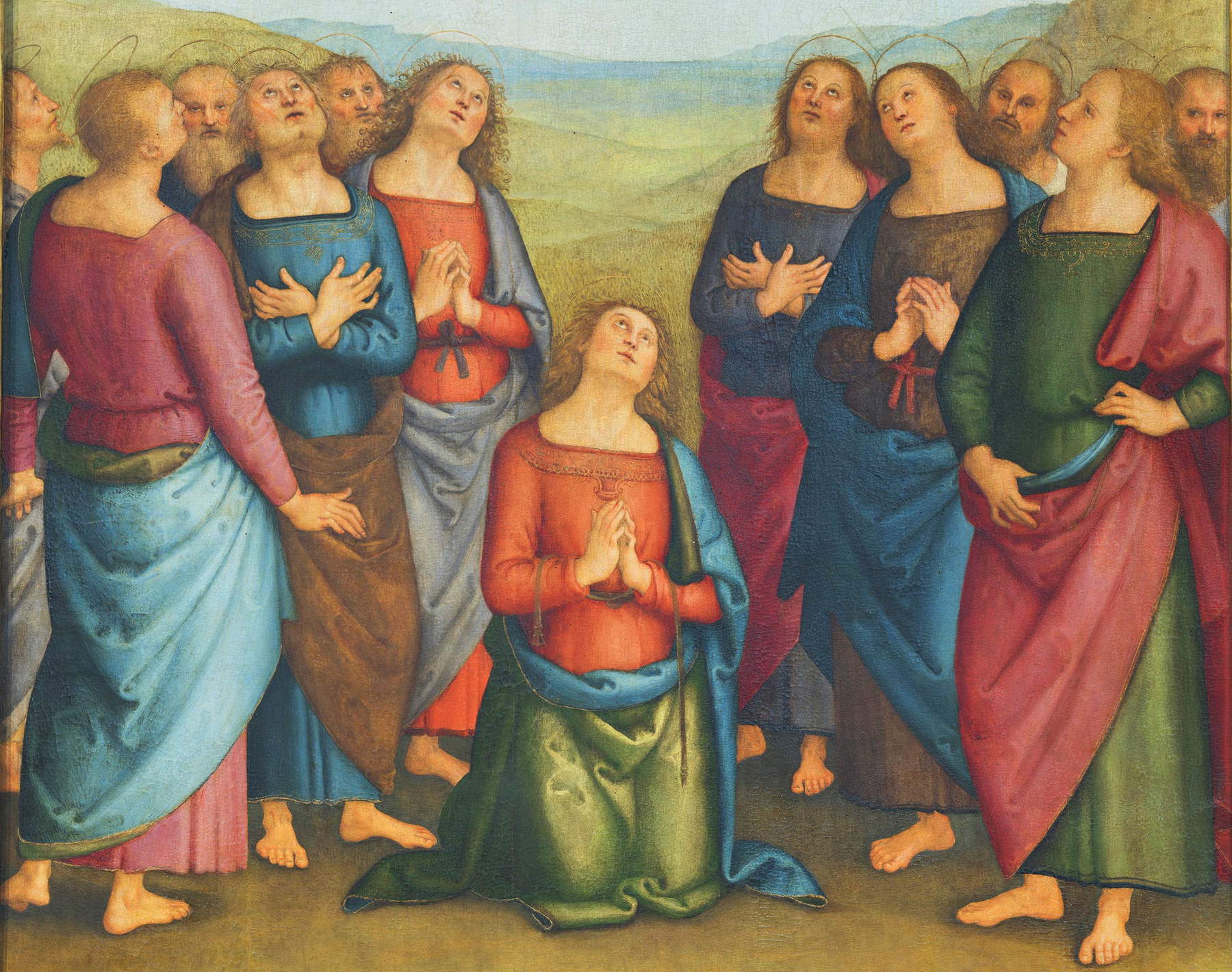
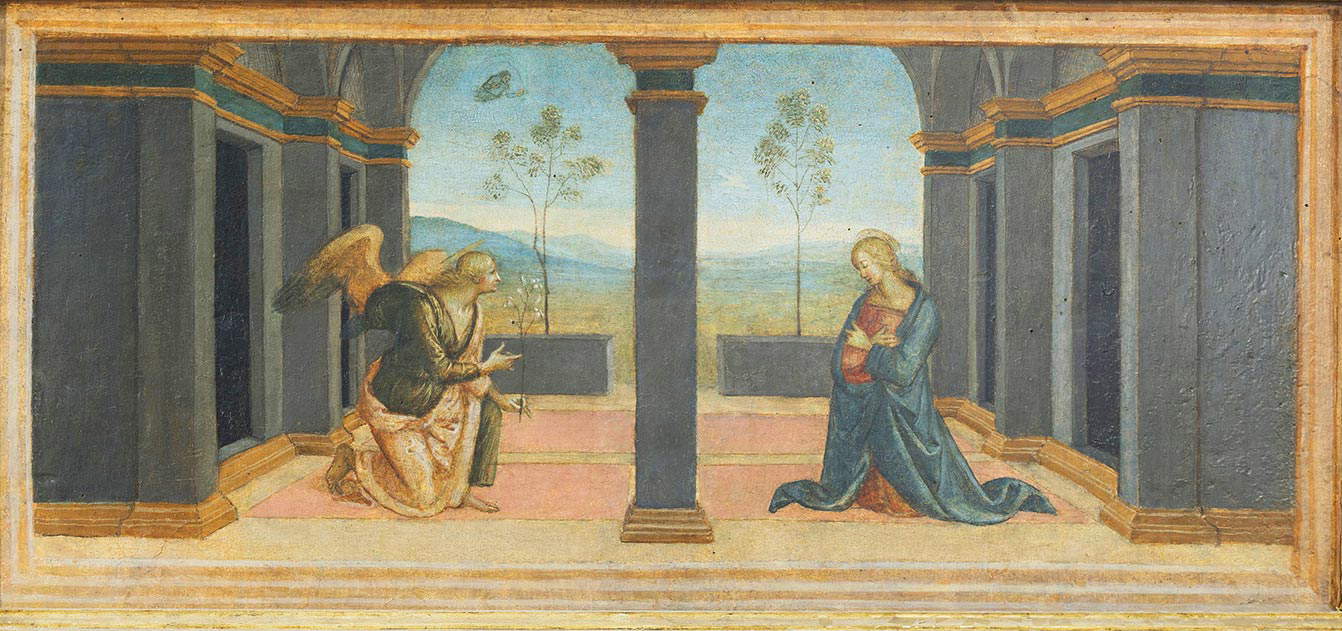
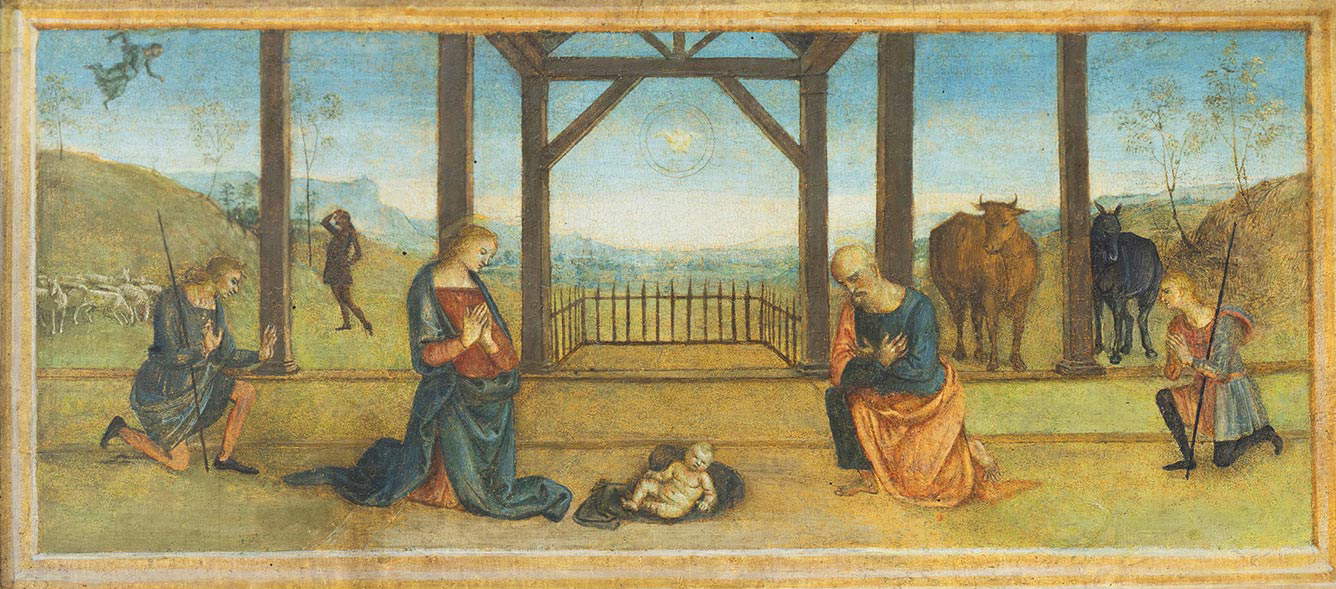
In the contract the notary also wrote that the painting was to be executed “with gold et altri colori buoni”: the people of Corciano had had it specified that first-rate and precious materials be used and that it should be "more beautiful and precious than Raphael’s Pala Oddi ."
In fact, the altarpiece is distinguished by thevery high quality of the pictorial draft ing and the fineness of the drawing, even though the painter replicated elements that were already well tried and tested in his production. Corciano’s work bears similarities , for example, to the centered altarpiece depicting theAssumption of the Virgin with Saints Gennaro, Paul and Cardinal Oliviero Carafa of Naples, which once stood out on the cathedral’s high altar, dedicated to Santa Maria Assunta, and from which it was removed in 1741-1744 to be placed in the Baraballo chapel in the right transept. The latter can be dated to the first lustre of the sixteenth century, a period in which, as Orazio Lovino writes in his essay in the exhibition catalog Il meglio maestro d’Italia, "Perugino, used to accept several commissions at
simultaneous by deferring their terms of delivery, was at the height of notoriety and overburdened with commissions.“ Lovino also points out the ”repetition in the Neapolitan altarpiece of the fortunate composition of the Assumption frescoed in the Sistine Chapel“ (replicated on panel in Florence and Corciano) and explains that this ”cannot be attributed only to the ’industrial’ recourse to one of the formulas of Perugino’s catalog of inventions,“ but ”to a precise emulative choice on the part of Oliviero Carafa,“ identified by critics in the character portrayed kneeling, in ”a meditated self-celebration that, moving from the subterranean Succorpo destined to house both the Gennarian relics and the remains of Cardinal Carafa immortalized in marble in eternal prayer, culminated with an ascending path in the major altarpiece." In summary, the Corciano Altarpiece is similar in composition to the aforementioned Neapolitan altarpiece, the lost fresco altarpiece depicting theAssumption of the Virgin in the Sistine Chapel before Michelangelo painted the Last Judgment there, and theAssumption preserved in the Basilica of the Santissima Annunziata in Florence.
The secret of the luminosity of Perugino’s panel paintings , as Giovanni Manuali, to whom the 2003 restoration work is owed, explains in his essay in the exhibition catalog With Gold and Precious and Good Colors: Perugino in Corciano: 1513-2013. The Five Hundred Years of the Altarpiece of the Assumption, curated by Tiziana Biganti, Fabio De Chirico and Alessandra Tiroli and held in 2013, is credited with the “peculiar type of chalkwork in use in Perugino’s workshop, with a mixture of lead white and yellow pigment in the amalgam, the perfect sanding that reduces it to a minimum layer, the subsequent burnishing to give a mirrored texture and the perfect adhesion to the wooden support by means of hot ox glue: a practice acquired in Florentine workshops and which would never abandon him.” Through infrared reflectographs, which revealed the artist’s execution procedures and afterthoughts, it was also possible to see how “over this white-yellow layer lowered with linseed oil to decrease absorbency, the painter sets the preparatory drawing, with charcoal that easily allows corrections, then stopped with a diluted black watercolor.”
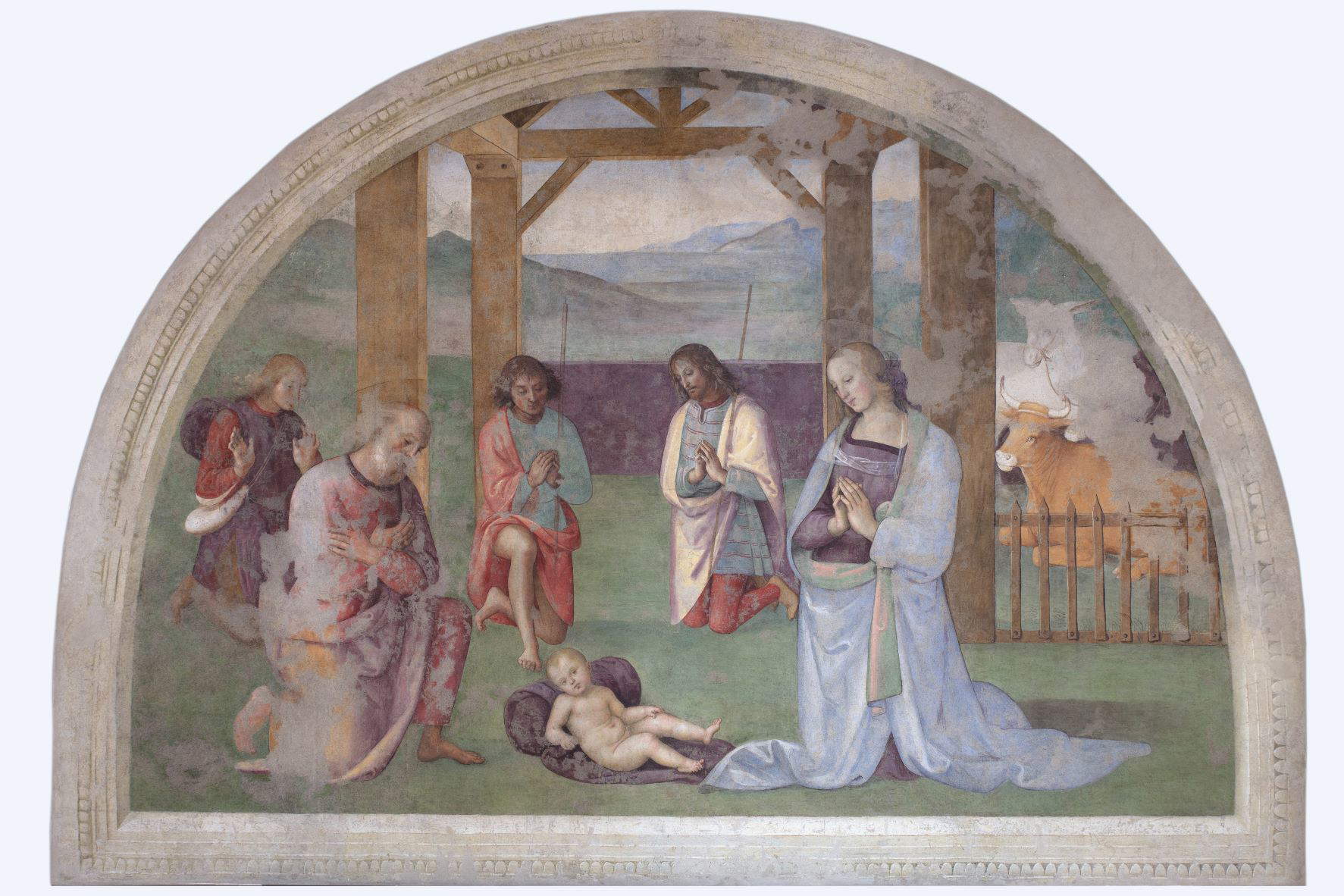
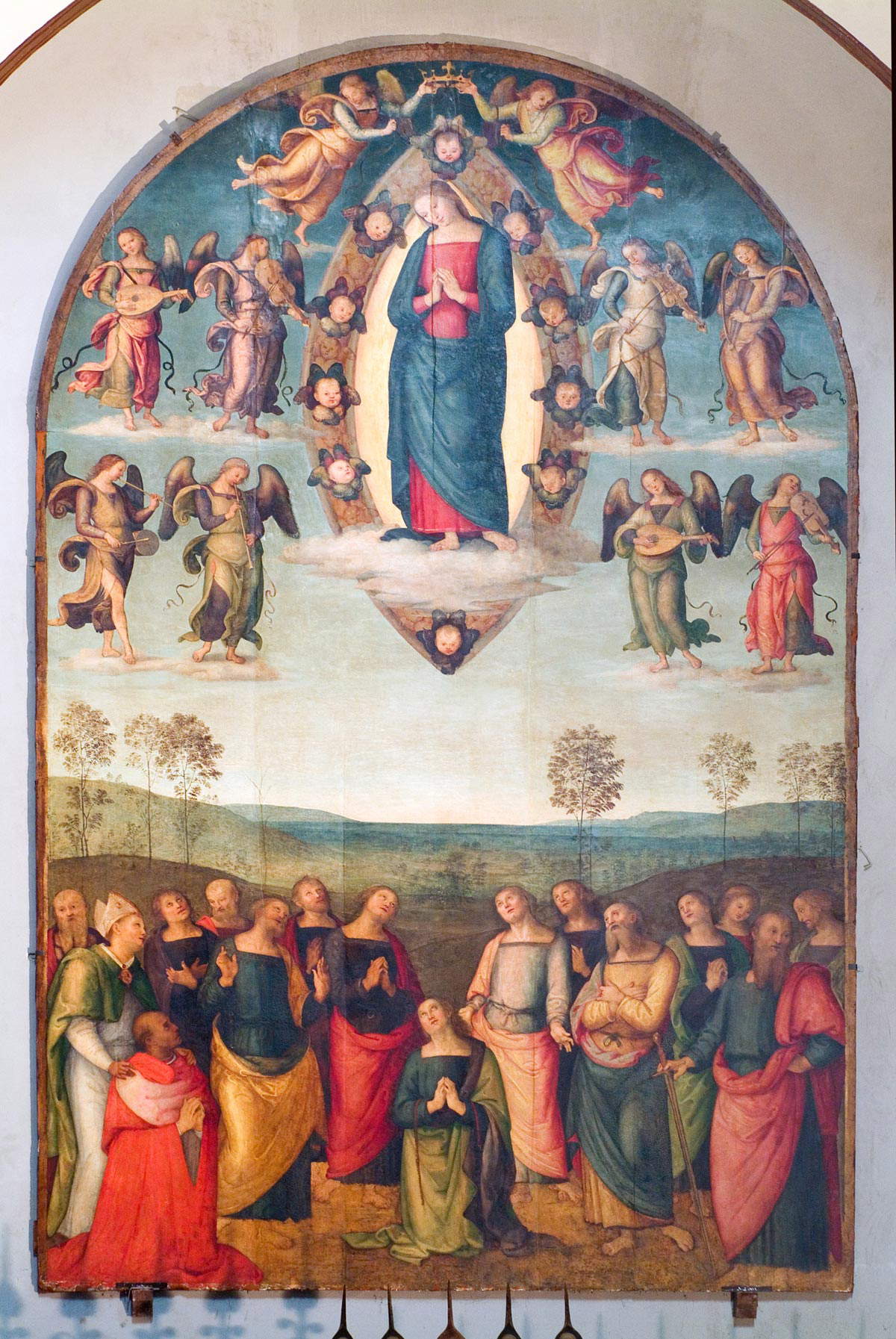
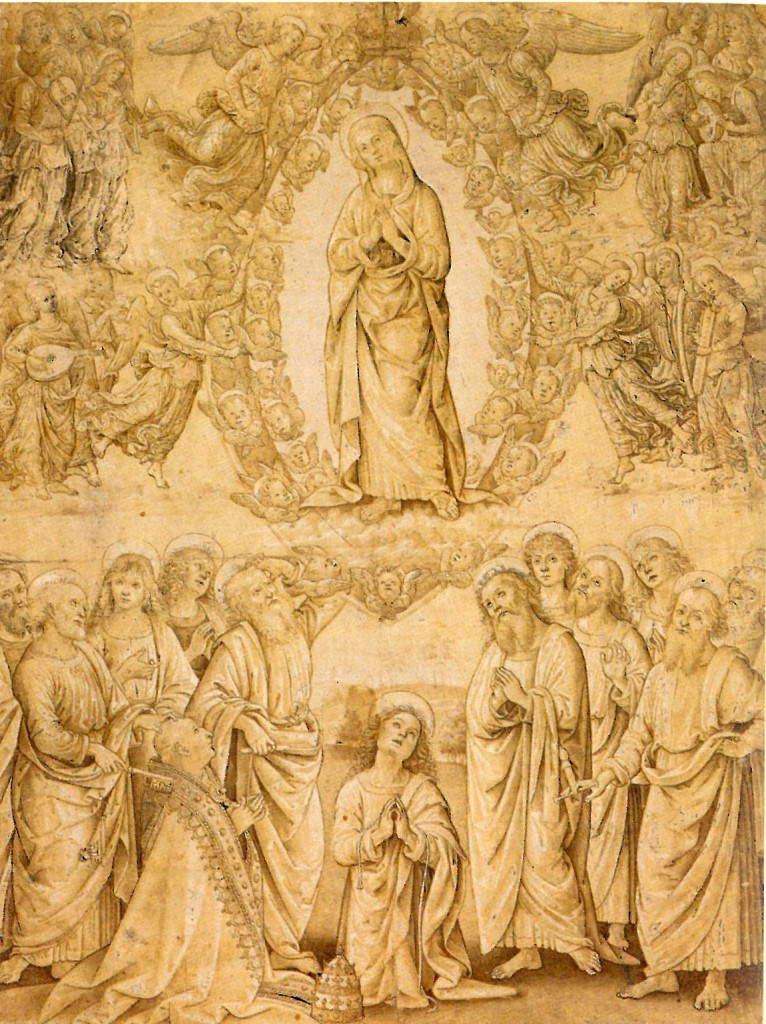
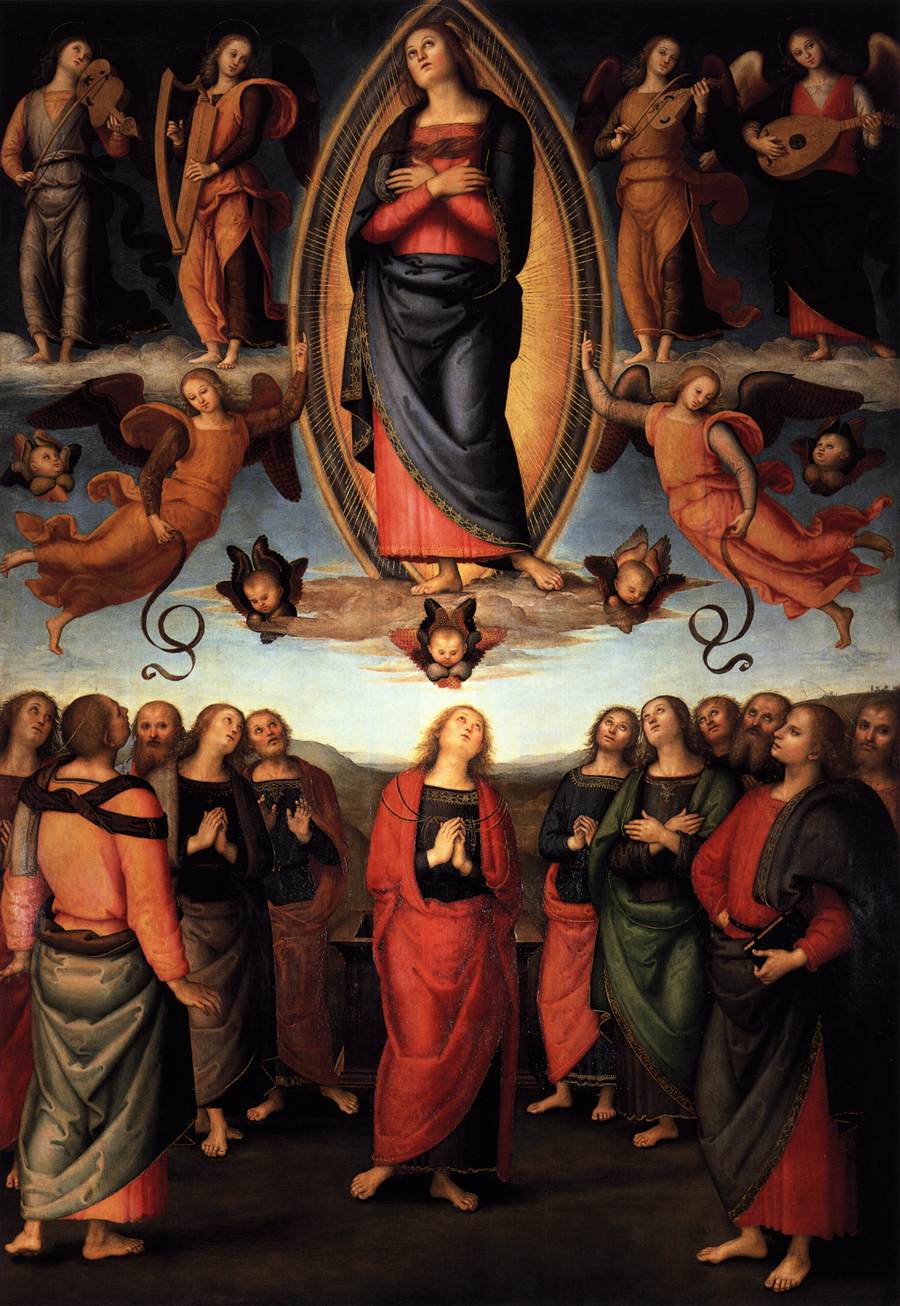
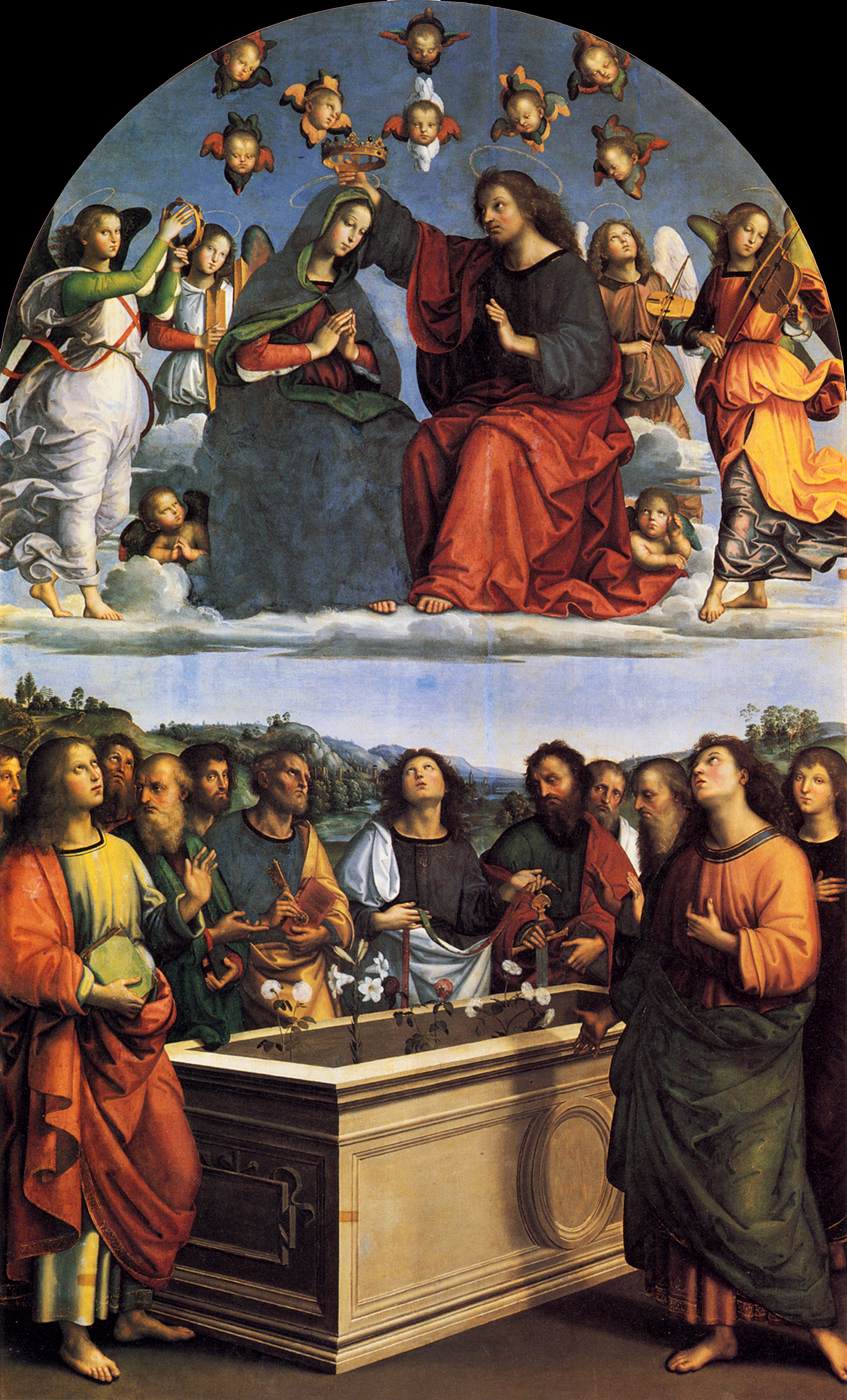
With regard to the frame of theAssumption of Corciano, an integral part of the work, Alberto Maria Sartore made known in his essay for the catalog of the same exhibition, the discovery of a new "document on the commission of the wooden structure of the Corciano altarpiece of theAssumption , exemplified on the Oddi model, which stands in direct connection with the already known contract of entrusting the pictorial part to Perugino, thus making possible the reconstruction of the entire path of the work’s realization." Sartore explains that donno Antonio Ciaci, parish priest of the church of Santa Maria, entrusted Antonio Bencevenni from Mercatello with the execution of the artifact including the furnishings; the carver undertook to complete the work within six months for a fee of twenty-five florins. The contract was drawn up on April 25, 1509. The commission for the carpentry refers back to the noblewoman Alessandra Baglioni degli Oddi, widow of Simone degli Oddi, the one who commissioned the Oddi altarpiece as the altarpiece for the family’s aristocratic chapel in the church of San Francesco al Prato in Perugia: in the text, in fact, Antonio da Mercatello obligates himself “to make a table to be kept above the altar in dicta chiesa a la foggia della tavola de madonna Leandra sta in San Francesco di porta Santa Susanna.” “It is evident,” says Sartore, "as was conceivable, that the model to be imitated for the Corciano altarpiece did not concern only the decoration and gilding of the frame, but also the structure of the table including the capsa; moreover, the carpenter in charge already knew the artifact to be taken as an example because he had lent his work there four years earlier. Alessandra, referred to in the contract by the sole appellation of Madonna Leandra, connotes herself as a noblewoman known and popular not only in the city but also in the city’s countryside." The present frame, however, is not the ancient one mentioned in the contract: the latter has in fact disappeared in the course of the rebuilding of the parish church, and the part containing the predella is to be considered even more modern; it appears in a 1936 photo, as Manuali points out, built in imitation of the one above it.
The central panel was divided from the predellae for a time: indeed, it appears from the 1843 inventory that the two episodes of theAnnunciation and theAdoration of the Shepherds were hung on the walls on either side of the high altar. Later, from the 1855 inventory description, after the church was renovated around 1850, it appears that the main canvas was behind the high altar, while the two predels were placed in the new sacristy. The altarpiece was reunited in the first half of the twentieth century and we can still admire it reassembled in all its splendor in the apse behind the high altar of the church dedicated to the Assumption in the village of Corciano, a must-see if you want to learn about the art of the late Perugino.
The article is written as part of “Pillole di Perugino,” a project that is part of the initiatives for the dissemination and diffusion of knowledge of the figure and work of Perugino selected by the Promoting Committee of the celebrations for the fifth centenary of the death of the painter Pietro Vannucci known as “il Perugino,” established in 2022 by the Ministry of Culture. The project, edited by the editorial staff of Finestre Sull’Arte, is co-financed with funds made available to the Committee by the Ministry.
Warning: the translation into English of the original Italian article was created using automatic tools. We undertake to review all articles, but we do not guarantee the total absence of inaccuracies in the translation due to the program. You can find the original by clicking on the ITA button. If you find any mistake,please contact us.